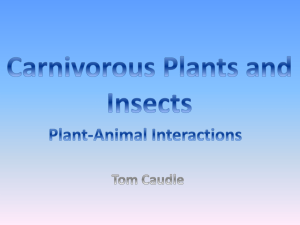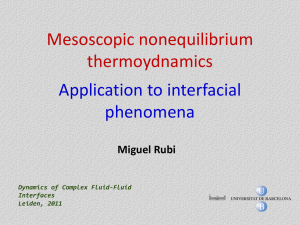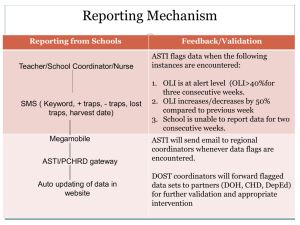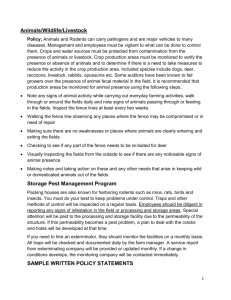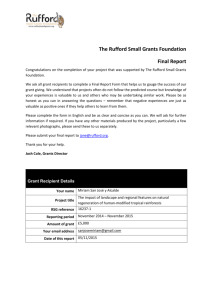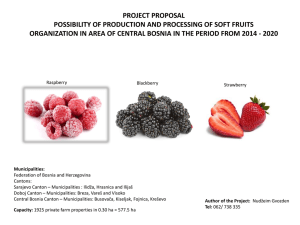Presentation from Softpest Multitrap
advertisement
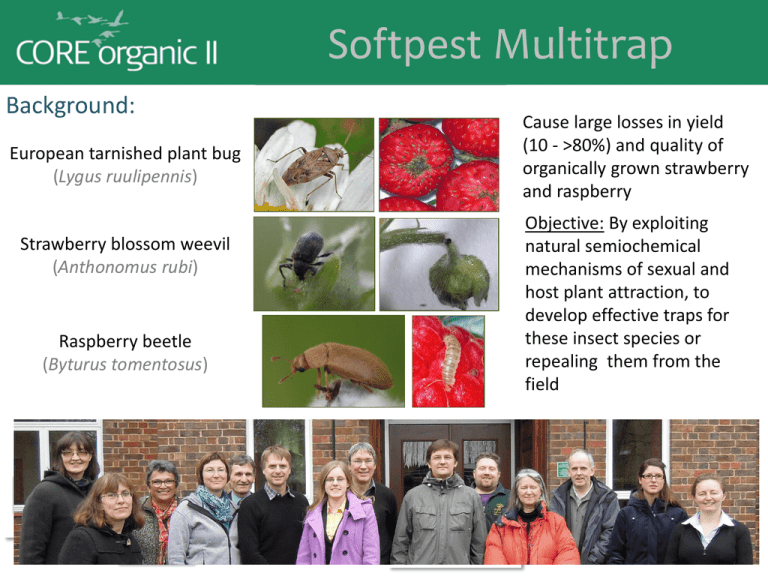
Softpest Multitrap Background: European tarnished plant bug (Lygus ruulipennis) Strawberry blossom weevil (Anthonomus rubi) Raspberry beetle (Byturus tomentosus) Cause large losses in yield (10 - >80%) and quality of organically grown strawberry and raspberry Objective: By exploiting natural semiochemical mechanisms of sexual and host plant attraction, to develop effective traps for these insect species or repealing them from the field Softpest Multitrap Some results: WP 1 - Chemical analysis of plant volatiles • The same sesquiterpenes identified in both strawberry and raspberry; potential insect pheromone synergists. • Possible insect repelling volatiles identified. WP 2 - Pest insects in strawberry • A. rubi: weevils caught throughout the growing season. • L. rugulipennis: later peak catches in Denmark and UK. than in Norway; more generations per year in the south. • For both higher catches in the crop than in the boundary vegetation. WP 3 - Pest insects in raspberry • A. rubi: CH: peak new gen. > peak overwintering gen. NOR: peak overwintering gen. > peak new gen. • B. tomentosus: Highest catch rates between leaves development and single flower buds • Fewer damaged flowers in plots with traps than control plot. • Trap density: more severe flower damage in plots with a high compared to a low density. WP 4 - Trap design Traps with green cross vanes the most effective for trapping both A. rubi and L. rugulipennis. • A. rubi: attracted to the traps but catch rates appears relatively low. • L. rugulipennis: observed to walk on the cross vanes without falling down. Softpest Multitrap Recommendations to soft berry producers: Pest insects in strawberry • Mount traps on the ground in the crop. • Use the green cross vane trap without the bee excluder grid to catch both species. • In perennial strawberry crops, traps should stay in the field till end of September to reduce overwinter generation Pest insects in raspberry • For A. rubi mount traps on the ground • Mount traps in the crop before spring emergence • To catch B. tomentosus: use traps with lures containing raspberry volatile and the beetle aggregation pheromone. • Change volatile lures on the traps before the new generation of A. rubi appear in the crop.

